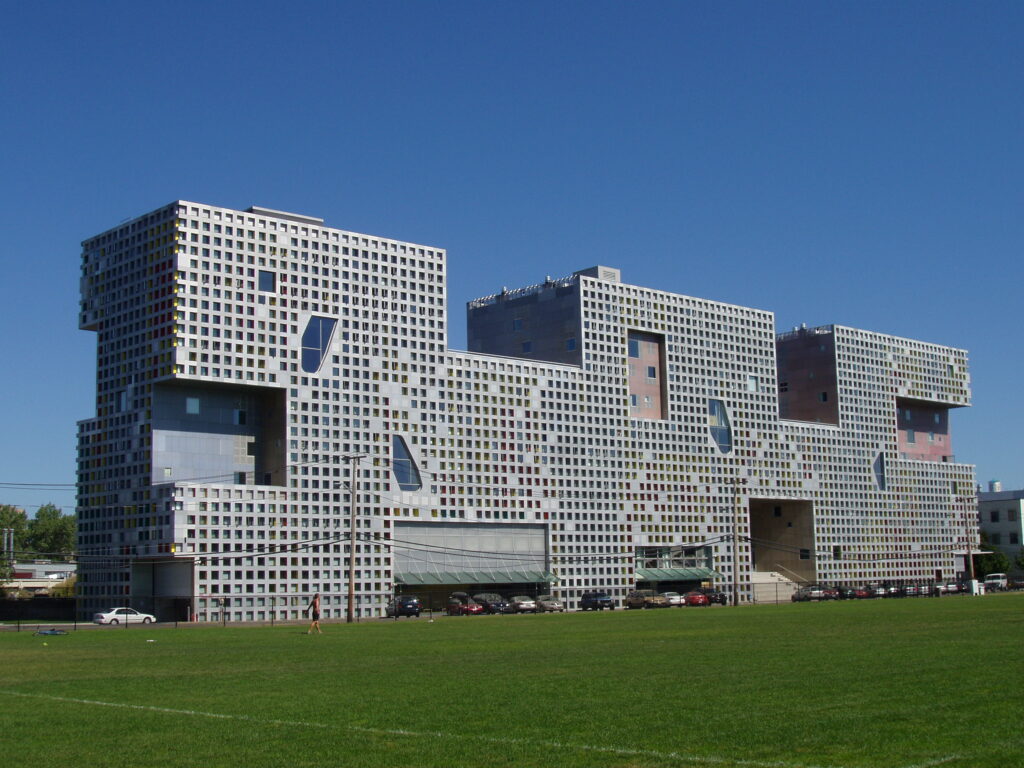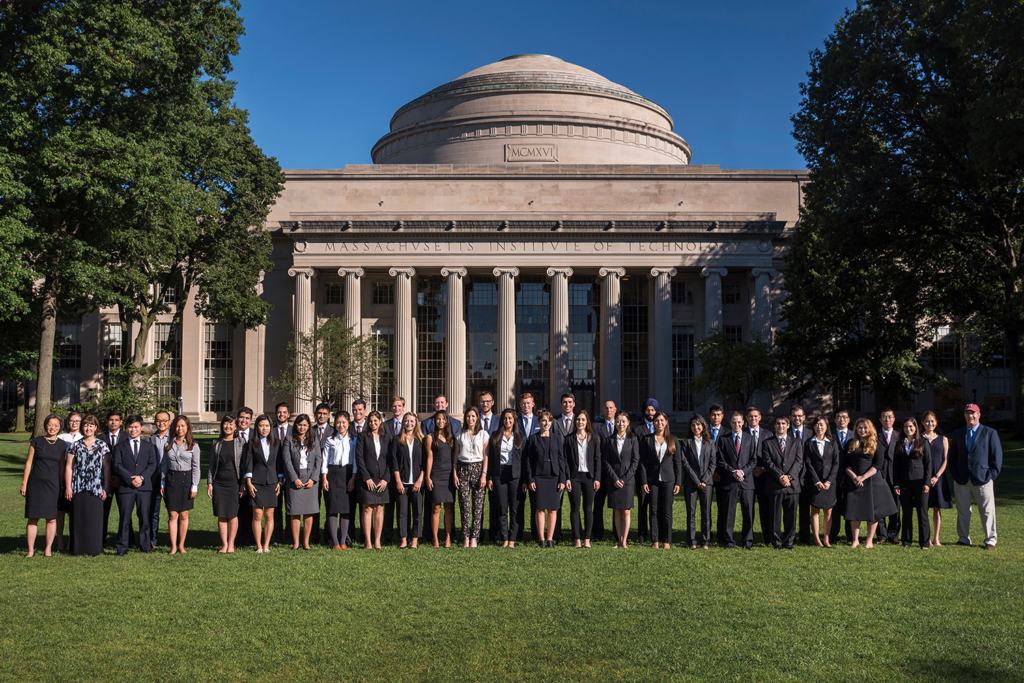The Massachusetts Institute of Technology (MIT) is a prestigious private research university situated in Cambridge, Massachusetts, United States. It was founded in 1861 in response to the increasing industrialization of the country. MIT adopted a European polytechnic university model, emphasizing laboratory instruction in applied science and engineering. Throughout its history, the institute has played a vital role in advancing various fields of modern science, engineering, mathematics, and technology.
Today, MIT is globally recognized as one of the most esteemed universities, consistently ranking among the top five institutions in international rankings. It is also known for its substantial wealth, boasting an endowment of over $15 billion as of 2019. MIT has a remarkable alumni community, including 89 Nobel laureates, more than any other institution, as well as numerous Fields Medalists and MacArthur Fellows. Beyond its academic excellence, MIT fosters a vibrant community with a diverse array of extracurricular activities and organizations.
MIT was established on April 10, 1861, by William Barton Rogers with approval from the Massachusetts legislature. Initially proposed as an “Institute for Technology,” Rogers’ plan encompassed both a polytechnic university and a center for scientific research. However, other legislators deemed the institution too costly and lacking practical education focus. Rogers revised his proposal, concentrating solely on education and research, which was subsequently approved. Construction of MIT’s first campus commenced shortly afterward, adjacent to Harvard University. Financial difficulties compelled Rogers to scale back his plans, resulting in a smaller school with only two departments: Mathematics and Philosophy, which included sciences.
Despite its modest beginnings, MIT swiftly established itself as a leading scientific institution in America. In 1866, it became a member of what is now known as the Corporation, a group of six prominent Boston-area colleges and universities, including Harvard University, Boston College, Tufts University, Brandeis University, and Northeastern University. The Corporation provides significant financial support to all member schools, facilitating collaboration on initiatives such as student exchange programs and shared resources like libraries and laboratories. It also oversees combined fundraising efforts for the six schools, contributing to Greater Boston’s status as a premier center for higher education in the United States.
Demonstrating its commitment to academic excellence and research, MIT faculty have won 89 Nobel Prizes, second only to Johns Hopkins University. Additionally, 177 current or former faculty members have been elected as fellows of the American Academy of Arts & Sciences. Thirteen faculty members have received Pulitzer Prizes, and 26 have won National Medals of Science. These achievements underscore MIT’s position as one of the world’s premier research universities. Notably, eight of the Nobel Prize winners were affiliated with the Radiation Laboratory at MIT during World War II, which played a crucial role in developing fundamental radar technologies essential for the Allied victory. MIT scientists and engineers have made significant contributions, including the creation of the global positioning system (GPS), development of the first computer numerical controlled machine tools (CNCs), discovery of the laser, and the creation of the first successful commercial jet engine.

Furthermore, MIT faculty engage in groundbreaking basic research across numerous fields, including aeronautics, astronautics, bioscience, chemistry, computation, economics and management, energy and environment, health sciences, materials science, mathematics, nanoscience, physics, robotics and artificial intelligence, social sciences, urban studies, and many others. With an annual budget exceeding $1 billion USD from federal government sources alone, MIT’s commitment to pushing the frontiers of science shows no signs of waning.
Located across from Boston Common parkland in downtown Boston, Massachusetts, MIT’s main campus consists of interconnected buildings housing classrooms, offices, laboratories, residence halls, dining facilities, athletic facilities, parks and gardens, shops, and services. The central part of the campus accommodates the majority of the university’s laboratories, with a few dormitory buildings interspersed among each department. While some students choose to live in nearby apartments or houses, particularly those with families, many opt to commute.
The institute’s convenient location in downtown Boston, along with its rich academic and cultural offerings, leads many students to engage in a wide variety of freelance work or take classes at other local colleges during their time at MIT. This vibrant urban environment results in an extremely diverse population on campus, attracting students from all over the world. Over 11% of domestic undergraduates identify as belonging to minority groups, and approximately 35% are first-generation college students. MIT’s admissions policy is based on rigorous academic standards, admitting applicants regardless of their background or social class. This meritocratic approach ensures that admitted students are among the best in the world. International students make up almost 30% of the undergraduate membership.
Additionally, MIT’s impact extends beyond providing an exceptionally educated workforce; it actively contributes to the city of Boston. A significant number of MIT graduates choose to remain in Boston after graduation and become leaders in various fields, from technology startups to banking, healthcare, architecture, law, public policy, philanthropy, and more. Boston’s global reputation as a hub for leading universities drives investment and sustained economic growth in the region. MIT’s strong ties with external partners worldwide also play a key role in shaping global innovation through collaborations, leading to a wide range of technological advancements.
Key Facts about MIT
- Location: Cambridge, Massachusetts, United States
- Founding Year: 1861
- University Type: Private research university
- Educational Model: European polytechnic university model
- Emphasis: Laboratory instruction in applied science and engineering
- Notable Rankings: Regularly ranked among the top five institutions worldwide
- Endowment: Over $15 billion (as of 2019)
- Alumni Achievements:
- 89 Nobel laureates, the most of any institution
- Fields Medalists and MacArthur Fellows
- Community: Vibrant and diverse, with numerous extracurricular activities and organizations
History of MIT
- Founded on April 10, 1861, by William Barton Rogers
- Initial proposal as an “Institute for Technology” with a polytechnic university and research center
- Revised to focus exclusively on education and research
- Campus construction adjacent to Harvard University
- Financial challenges led to a smaller school with two departments: Mathematics and Philosophy (including sciences)
- Rapid establishment as a leading scientific institution in America
- Joined the Corporation, a group of prominent Boston-area colleges and universities, in 1866
MIT’s Contributions and Achievements
- Academic Excellence:
- 89 Nobel Prizes awarded to faculty members (second only to Johns Hopkins University)
- 177 current or former faculty members elected fellows of the American Academy of Arts & Sciences
- 13 Pulitzer Prize winners among faculty members
- 26 National Medals of Science recipients
- Major Technological Advancements:
- Creation of the global positioning system (GPS)
- Development of the first computer numerical controlled machine tools (CNCs)
- Discovery of the laser
- Creation of the first successful commercial jet engine
- Research in Various Fields:
- Aeronautics and astronautics
- Bioscience
- Chemistry
- Computation
- Economics and management
- Energy and environment
- Health sciences
- Materials science
- Mathematics
- Nanoscience
- Physics
- Robotics and artificial intelligence
- Social sciences
- Urban studies
- Federal Funding:
- Annual budget exceeding $1 billion USD from federal government sources alone

MIT Campus and Community
- Campus Overview:
- Located in Cambridge, Massachusetts
- Main campus across from Boston Common parkland in downtown Boston
- Interconnected buildings housing classrooms, offices, and laboratories
- Residence halls, dining facilities, athletic facilities, parks and gardens, shops, and services
- Dormitory buildings interspersed among each department
- Student Life:
- Diverse and vibrant community
- Wide range of extracurricular activities and organizations
- Opportunities for freelance work and classes at other local colleges
- Student diversity:
- Over 11% of domestic undergraduates self-identify as a minority group
- Approximately 35% are first-generation college students
- Meritocratic admissions process attracting the best students worldwide
- International students make up almost 30% of the undergraduate membership
- Impact on Boston:
- MIT graduates contribute extensively to the city of Boston
- Leaders in various fields, such as technology startups, banking, healthcare, architecture, law, public policy, philanthropy, etc.
- Boston’s global reputation as a hub for leading universities drives investment and sustained economic growth
| Technological Advancement | Significance |
|---|---|
| Global Positioning System (GPS) | Revolutionized navigation and geolocation systems |
| Computer Numerical Controlled (CNC) | Transformed manufacturing processes with automated tools |
| Laser | Fundamental technology with numerous applications |
| Commercial Jet Engine | Enabled modern air travel and transportation |
Note: This table showcases only a few examples of MIT’s major technological advancements.
Overall, MIT’s rich history, academic excellence, significant contributions to various fields, vibrant campus community, and impact on Boston and the world position it as a global leader in education and research.
Frequently Asked Questions about Massachusetts Institute of Technology (MIT)
What is MIT?
MIT stands for the Massachusetts Institute of Technology. It is a prestigious private research university located in Cambridge, Massachusetts, United States.
When was MIT founded?
MIT was founded on April 10, 1861.
What is the educational focus of MIT?
MIT adopts a European polytechnic university model and emphasizes laboratory instruction in applied science and engineering.
What are some notable achievements of MIT?
MIT faculty members have won 89 Nobel Prizes, more than any other institution. The institute has made major contributions to various fields, including the creation of GPS, development of CNC machine tools, discovery of the laser, and the first successful commercial jet engine.
What is the campus like at MIT?
MIT’s campus is located in Cambridge, Massachusetts, near Boston. It consists of interconnected buildings housing classrooms, offices, laboratories, residence halls, dining facilities, athletic facilities, parks and gardens, shops, and services.
What is the student community like at MIT?
MIT has a vibrant and diverse student community. Students engage in a wide range of extracurricular activities and organizations. The campus fosters a collaborative and intellectually stimulating environment.
How does MIT contribute to the local community?
MIT graduates contribute extensively to the city of Boston and the region. They become leaders in various industries, driving economic growth and innovation. MIT’s strong ties with external partners worldwide also contribute to shaping global innovation.
How can one apply to MIT?
To apply to MIT, prospective students need to go through a rigorous admissions process. The institute follows a meritocratic approach, admitting students based on their academic excellence and potential regardless of their background or social class.
What is the current ranking of MIT among universities worldwide?
MIT consistently ranks among the top five institutions worldwide in various international rankings.
What is the endowment of MIT?
As of 2019, MIT has an endowment of over $15 billion.
How can I learn more about MIT?
For more information about MIT, you can visit their official website or contact their admissions office for specific inquiries.
More about Massachusetts Institute of Technology (MIT)
- MIT Official Website
- MIT Admissions
- MIT Nobel Laureates
- MIT Research Areas
- MIT Campus Map
- MIT Endowment Information


